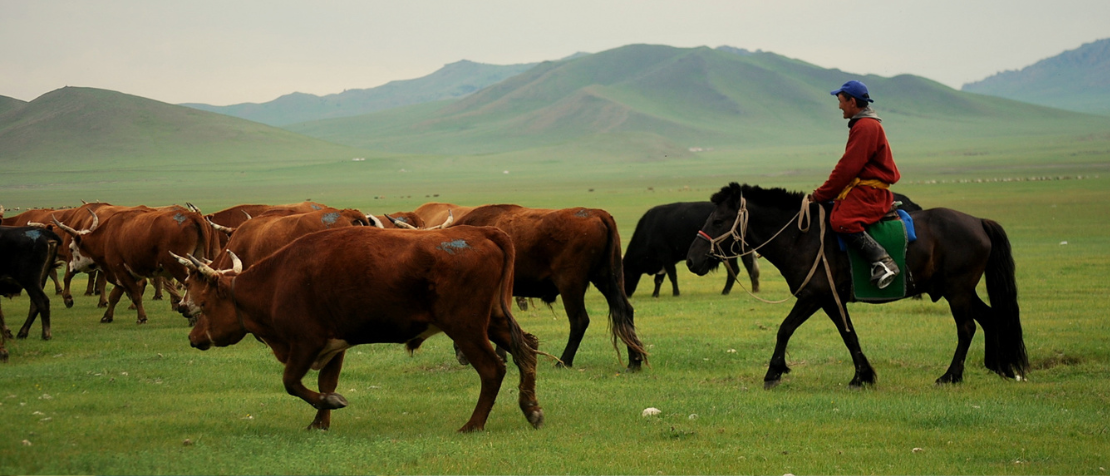Central Asia and the Caucasus strengthen brucellosis prevention and control

©FAO/Eran Raizman
Brucellosis is a disease that primarily affects ruminants in many countries around the world. Due to its zoonotic nature – being transmissible from animals to humans – it often affects farm workers and rural populations. Given its debilitating effects on economic and food production, the control of brucellosis is among the highest livestock-related priorities in Central Asia and the Caucasus, not to mention its impacts on public health.
To further prevent brucellosis in Central Asia and the Caucasus, the Food and Agriculture Organization of the United Nations (FAO) has organized a three-day workshop, starting today, to assess countries’ status in the progressive control of brucellosis. The event brings together representatives from public health and veterinary authorities from Armenia, Azerbaijan, Georgia, Kazakhstan, Kyrgyzstan, Tajikistan, Turkmenistan and Uzbekistan.
“Given brucellosis’ prevalence across the region and its transboundary nature, for its effective control, it is critical to use a regional approach,” said Daniel Beltran-Alcrudo, an FAO technical adviser for animal health. “Moreover, due to its zoonotic nature, a One Health approach should be applied that considers the strong interconnectedness of the health of people, animals and ecosystems.”
The workshop utilizes the Stepwise Approach for the Progressive Control of Brucellosis (SAPCB) and the Staged Tool for the Elimination of Brucellosis (STEB) – a pair of complementary resources that use a multisectoral, One Health approach to assist countries in preventing, controlling and eliminating brucellosis in animals and people.
The SAPCB is a simple-to-use guidance document that provides principles, strategies and resources for countries to use in controlling and eliminating brucellosis. The STEB, meanwhile, is a complementary self-assessment tool for countries to use in evaluating existing capacities. The resources build on FAO’s existing stepwise approach model for disease control, which breaks down the disease eradication process into smaller, more manageable steps from a One Health perspective.
“Presenting these tools and conducting an initial country assessment will allow countries to identify gaps and define the next tailored steps in brucellosis prevention and control for each of the participating countries in Central Asia and the Caucasus,” Beltran-Alcrudo added. “It is foreseen that in three years, countries will reassess their situation in a second workshop and see the progress.”
This initiative is part of a three-year FAO project to provide technical assistance towards brucellosis control in Armenia, Kazakhstan, Türkiye and Uzbekistan. The event also will serve as a kick-off for the planning of upcoming activities in these countries. Complementary projects on brucellosis in the region include a multicountry project for Central Asia, granted by the Pandemic Fund.
Brucellosis emergence and control
Brucellosis is caused by a bacterium that can infect large and small ruminants (cattle, sheep and goats), as well as humans, camels, dogs and pigs. In ruminants, it causes abortion, premature birth and stillbirth, all of which can substantially impact economic and food production. Infected animals typically develop enlarged lymph nodes, high temperatures and general weakness. Animals can become infected through feed and direct contact, while humans can become infected through the consumption of milk and other dairy products and through the handling of infected and sick animals or their meat. In humans, the disease is more commonly referred to as Malta fever, Mediterranean fever or undulant fever, and it can be extremely debilitating.
Infection in livestock animals can be prevented through vaccination, removal of infected animals from the herd and proper biosecurity, while pasteurization is key to protecting humans. More can be learned in the FAO leaflets developed for veterinarians and farmers to protect themselves against zoonotic diseases.
News
"One Health" webinar examines problems of zoonoses and offers solutions to the region
Regional training on brucellosis laboratory diagnosis for Central Asian countries
Brucellosis Progressive Control Workshop for Central Asia
Other resources
Protecting yourself against animal diseases - A guide for farmers
Protecting yourself against animal diseases - A guide for veterinarians
